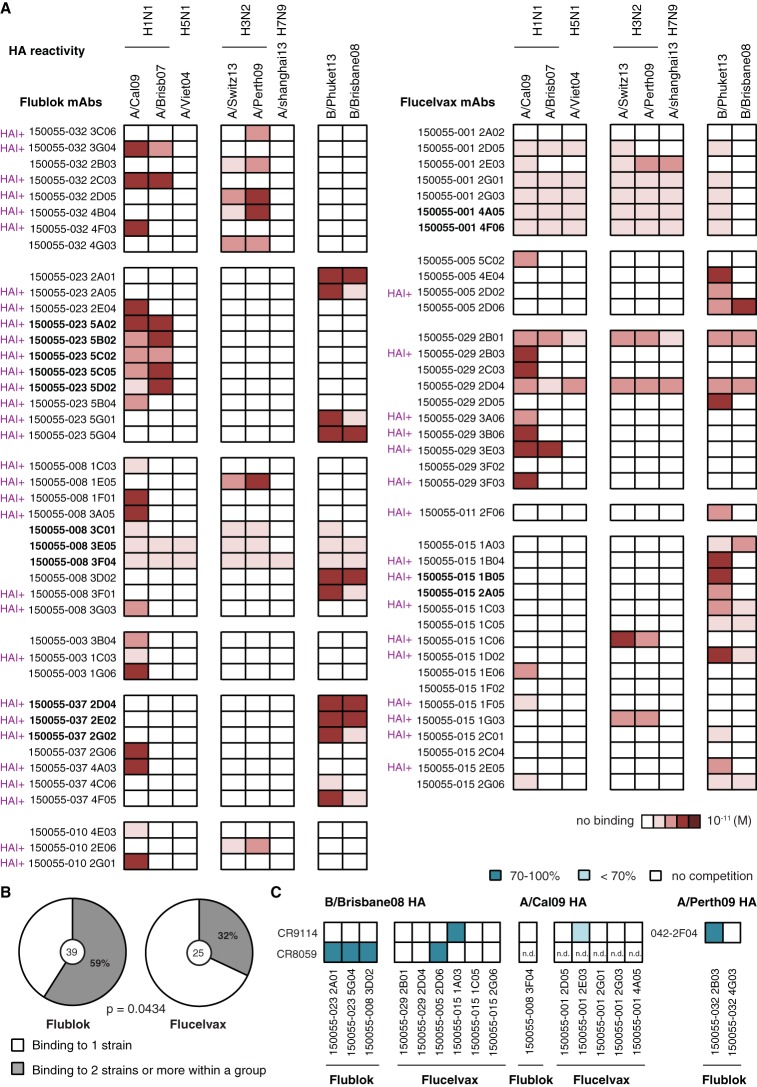FIG 5.
HA cross-reactivity and epitopes targeted by MAbs induced by Flublok or Flucelvax immunization. (A and B) Cross-reactivity to influenza group 1 (H1N1 and H5N1), group 2 (H3N2 and H7N9), and B strain rHAs tested by ELISA. Assays were performed in duplicate three times for each antibody. (A) ELISA binding affinities represented by KD (M) were plotted as a heatmap. MAbs were named based on the study name (150055), the subject identifier (032 for example), and the individual clone’s name. MAbs in boldface from the same subject are part of a clonal expansion. (B) Proportion of MAbs binding to 2 or more rHAs within the same group out of the total number of homosubtypic MAbs (bound to group 1 or group 2 or B strain HAs). Statistical significance was determined by Fisher’s exact test. The number in the middle of the pie charts represents the total number of homosubtypic HA-reactive MAbs for Flublok (n = 39) and Flucelvax (n = 25). (C) Competition for conserved epitopes on HA. Biotinylated MAbs CR9114 (stalk reactive, A and B strains, MN+), CR8059 (head, B strain only, HAI− MN+), and DY-2F04 (stalk reactive, group 2, MN+) were tested for binding to rHA protein by ELISA with or without the presence of a competitor MAb. HAs from B/Brisbane/60/2008, A/California/07/2009 H1N1, and A/Perth/16/2009 H3N2 influenza strains were used depending on the specificities of the MAbs. Only HAI− HA-reactive MAbs were used as competitors. The experiment was done in duplicate 2 to 3 times. The average percentage of competition was calculated. Represented here are different degrees of inhibition (100%, 70% to 100%, or <70%). An inhibition greater than 50% was considered a positive competition. n.d., not determined.

